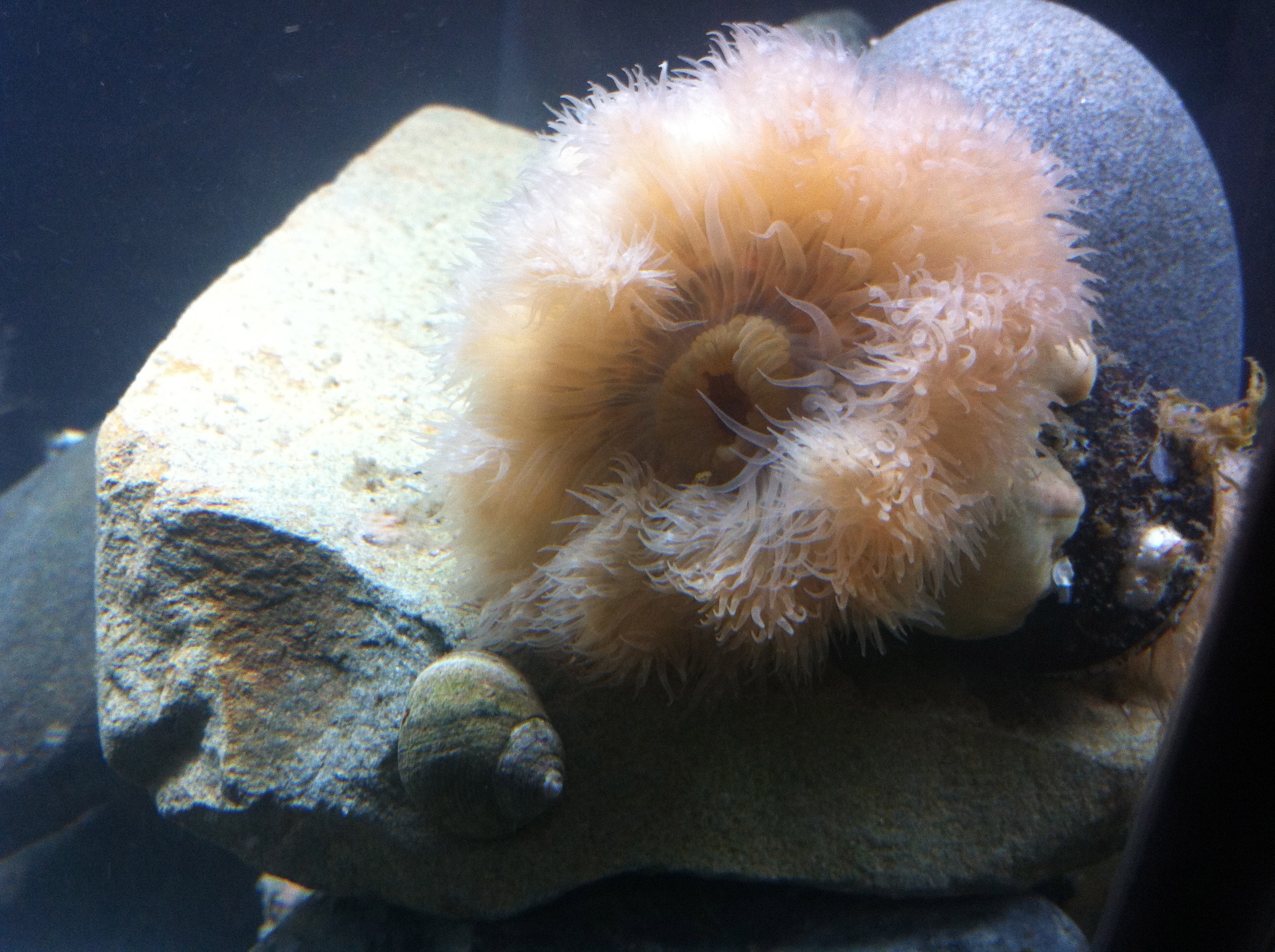|
Metridin
Metridin (, ''Metridium proteinase A'', ''sea anemone protease A'', ''sea anemone proteinase A'') is an enzyme. This enzyme catalyses the following chemical reaction : Preferential cleavage: Tyr-, Phe-, Leu-; little action on Trp- This digestive enzyme is isolated from the sea anemone ''Metridium senile ''Metridium senile'', the Plumose, Fluffy, or Frilled anemone, is a species of sea anemone in the Family (biology), family Metridiidae. As a member of the genus ''Metridium'', it is a type of plumose anemone and is found in the seas off north-wes ...''. References External links * {{Portal bar, Biology, border=no EC 3.4.21 ... [...More Info...] [...Related Items...] OR: [Wikipedia] [Google] [Baidu] |
Enzyme
An enzyme () is a protein that acts as a biological catalyst by accelerating chemical reactions. The molecules upon which enzymes may act are called substrate (chemistry), substrates, and the enzyme converts the substrates into different molecules known as product (chemistry), products. Almost all metabolism, metabolic processes in the cell (biology), cell need enzyme catalysis in order to occur at rates fast enough to sustain life. Metabolic pathways depend upon enzymes to catalyze individual steps. The study of enzymes is called ''enzymology'' and the field of pseudoenzyme, pseudoenzyme analysis recognizes that during evolution, some enzymes have lost the ability to carry out biological catalysis, which is often reflected in their amino acid sequences and unusual 'pseudocatalytic' properties. Enzymes are known to catalyze more than 5,000 biochemical reaction types. Other biocatalysts include Ribozyme, catalytic RNA molecules, also called ribozymes. They are sometimes descr ... [...More Info...] [...Related Items...] OR: [Wikipedia] [Google] [Baidu] |
Catalysis
Catalysis () is the increase in rate of a chemical reaction due to an added substance known as a catalyst (). Catalysts are not consumed by the reaction and remain unchanged after it. If the reaction is rapid and the catalyst recycles quickly, very small amounts of catalyst often suffice; mixing, surface area, and temperature are important factors in reaction rate. Catalysts generally react with one or more reactants to form intermediates that subsequently give the final reaction product, in the process of regenerating the catalyst. The rate increase occurs because the catalyst allows the reaction to occur by an alternative mechanism which may be much faster than the noncatalyzed mechanism. However the noncatalyzed mechanism does remain possible, so that the total rate (catalyzed plus noncatalyzed) can only increase in the presence of the catalyst and never decrease. Catalysis may be classified as either homogeneous, whose components are dispersed in the same phase (usual ... [...More Info...] [...Related Items...] OR: [Wikipedia] [Google] [Baidu] |
Chemical Reaction
A chemical reaction is a process that leads to the chemistry, chemical transformation of one set of chemical substances to another. When chemical reactions occur, the atoms are rearranged and the reaction is accompanied by an Gibbs free energy, energy change as new products are generated. Classically, chemical reactions encompass changes that only involve the positions of electrons in the forming and breaking of chemical bonds between atoms, with no change to the Atomic nucleus, nuclei (no change to the elements present), and can often be described by a chemical equation. Nuclear chemistry is a sub-discipline of chemistry that involves the chemical reactions of unstable and radioactive Chemical element, elements where both electronic and nuclear changes can occur. The substance (or substances) initially involved in a chemical reaction are called reagent, reactants or reagents. Chemical reactions are usually characterized by a chemical change, and they yield one or more Product (c ... [...More Info...] [...Related Items...] OR: [Wikipedia] [Google] [Baidu] |
Anemone
''Anemone'' () is a genus of flowering plants in the buttercup family Ranunculaceae. Plants of the genus are commonly called windflowers. They are native to the temperate and subtropical regions of all regions except Australia, New Zealand, and Antarctica. The genus is closely related to several other genera including '' Anemonoides'', '' Anemonastrum'', '' Hepatica'', and '' Pulsatilla''. Some botanists include these genera within ''Anemone''. Description ''Anemone'' are perennials that have basal leaves with long leaf-stems that can be upright or prostrate. Leaves are simple or compound with lobed, parted, or undivided leaf blades. The leaf margins are toothed or entire. Flowers with 4–27 sepals are produced singly, in cymes of 2–9 flowers, or in umbels, above a cluster of leaf- or sepal-like bracts. Sepals may be any color. The pistils have one ovule. The flowers have nectaries, but petals are missing in the majority of species. The fruits are ovoid to obovoid sh ... [...More Info...] [...Related Items...] OR: [Wikipedia] [Google] [Baidu] |
Metridium Senile
''Metridium senile'', the Plumose, Fluffy, or Frilled anemone, is a species of sea anemone in the Family (biology), family Metridiidae. As a member of the genus ''Metridium'', it is a type of plumose anemone and is found in the seas off north-western Europe and both the east and west coasts of North America. Description The base of ''Metridium senile'' is considerably wider than the column and is attached to rock or another Substrate (biology), substrate. The column is long, smooth and cylindrical, of a fleshy consistency with a slimy surface lubricated with mucus. There are no warts or suckers and the column is topped by a parapet and deep groove. The oral disc is broad and deeply lobed into several curving sections that overhang the column. The slender, pointed tentacles are very numerous in larger specimens though fewer and relatively longer in smaller ones. Those near the margin are crowded and short whereas further into the disc they are longer and more dispersed. The col ... [...More Info...] [...Related Items...] OR: [Wikipedia] [Google] [Baidu] |



